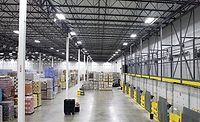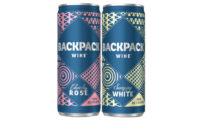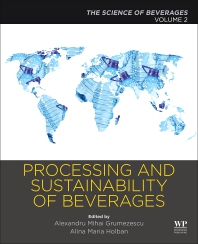Energy-efficient facilities drive sustainability, saves money
LED lighting, solar energy proliferating in beverage facilities

When it comes to consumer packaged goods, a 2015 survey from Nielsen shows the positive influence that sustainability can offer. According to the New York-based market research firm’s global study, 66 percent of respondents were willing to pay a premium for sustainable goods. But sustainability isn’t limited to the ingredient supply chain, as facility operations are realizing the tangible benefits of sustainable operations.
“Most of them have sustainability goals that aren’t as much a formal program as much as it is they just want to do the right thing and because, particularly, it’s cost-viable,” says Chet Willey, president of Chet Willey Associates, Arlington, Texas.
Consuming less energy is a main sustainability goal of many companies, offering the benefits of lower energy costs. However, using energy efficiently is central to this goal, according to experts. Kyle Wilson, managing director at St. Louis-based HDA Architects, notes the advancements made to building equipment throughout the years to assist with energy-efficiency goals.
“The quality of lighting and HVAC equipment is far better today than 20 years ago,” he says. “And a better building envelope has allowed those systems to consume less energy. More stringent energy codes are also increasing the performance requirements for these systems. The higher baseline makes it harder to gain more efficiency and get back the investment.”
Willey highlights the use of light-emitting diode (LED) lighting has become nearly universal in beverage facilities because LED lighting can reduce energy consumption and electricity costs.
“I think [LED lighting] has some financial advantages because of the reduced electricity costs, which of course helps save resources as well,” he says. “But when things have a financial payback, they’re a lot more attractive for people to do. … There’s some incentives out there [from] some of these lighting companies that they’ll actually put in these LED lights and let the distributor pay out the cost with the energy savings, so they’re not out any capital costs there initially. They get the benefits, and then after the lights are paid for, they get the additional savings.”
Willey adds that improved water management, largely a result of equipment innovations requiring less water, has dramatically reduced the amount of wastewater leaving manufacturing facilities.
As more energy solutions become available, the cost of going green is becoming more affordable for many. HDA’s Wilson notes that energy management and storage through the use of solar and wind power will become central to energy-efficiency efforts going forward.
“The next energy-efficiency gains are going to come from energy management and storage,” he says. “Solar options are becoming more affordable. Regional incentives for investing in solar can speed up [return on investment] (ROI) when available. Where solar doesn’t make sense, wind power can be available from the utility company. This allows facilities to use renewable energy without extensive infrastructure costs. Once we build a better battery and energy supply network, we won’t need on-demand generation. This will work in favor of wind and solar and further increase adoption.”
The implementation of roof-mounted solar panels at distribution facilities recently has proliferated, Willey notes. “There are some government programs that will give you some incentives to go to solar panels, and there’s nothing more sustainable than the use of the sunrays,” he says. “In many cases, not only are they able to provide for their needs during the day, but at some points in time, they’re selling electricity back to the power companies. So, I think more and more distributors, particularly when they’re building new facilities, they’re taking advantage of the solar energy.”
Although LEED certification gained recognition several years ago, Willey notes that he has seen companies shy away from it more recently.
“I’ve seen that they want parts of it, but they don’t want to go through the whole certification process because it’s quite expensive,” he explains. “... It was a big topic several years back, but I don’t see too many of the people now saying, ‘Yes, we want an LEED certified facility.’ I think they’re taking the best parts of sustainability and utilizing those but not going to the extreme of what it takes to be LEED certified.”
However, HDA’s Wilson notes the benefits that beverage distributors can realize through LEED certification or other certification and monitoring programs to help encourage and maintain energy-efficiency goals. “Companies should consider LEED certification as part of their corporate social responsibility platform. LEED certification now requires performance reporting to keep that certification in good standing,” he explains. “Facilities should always strive to be efficient, certification supports an organization’s cultural goals. Green Globes is another rating system to measure a facility’s commitment to sustainability.
“The effort to reduce consumption requires monitoring and reporting,” he continues. “An eDashboard of this information in a communal area will encourage facility occupants to ‘buy-in.’ When occupants understand their impact on the operation, they can change wasteful behaviors.” BI
Looking for a reprint of this article?
From high-res PDFs to custom plaques, order your copy today!








